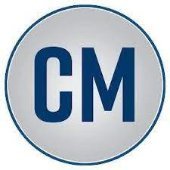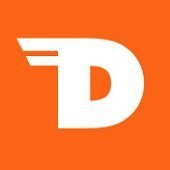-
Welcome to Auto Parts Forum
Whether you are a veteran automotive parts guru or just someone looking for some quick auto parts advice, register today and start a new topic in our forum. Registration is free and you can even sign up with social network platforms such as Facebook, X, and LinkedIn.
HD Headaches: Understanding Heavy-Duty Parts
-
Similar Topics
-
By APF
When selecting parts for a car repair, it pays to know the differences between original and aftermarket parts. Whenever possible, get estimates for both.
Choosing between original and aftermarket car parts — and even used parts of either type — is all about squaring your priorities with your budget.
You’ll have different options depending on the part and the shop. And the best choice will depend on whether you’re trying to keep repairs cheap, restore your car’s appearance after a wreck or soup up your ride.
» SIGN UP: link hidden, please login to view
Before we get into that, here are the key differences:
Original equipment manufacturer (OEM) parts match those that came with your car, and are of the same quality as its original parts. They’re also the most expensive. Aftermarket parts are cheaper, and made by other manufacturers — often several, giving you more options. Used parts may have a bit of wear and tear, but should be inspected or rebuilt to ensure they’ll work. These are the cheapest option. Choosing between aftermarket and OEM parts
Your decision will depend on the type of repair and the quality and price of the parts. Always look for parts that come with a warranty, even if they’re OEM, so you’ll be protected in case they fail.
Auto body repairs
Some aftermarket parts may be OK for
link hidden, please login to view, but others won’t be as good, says Michael Calkins, manager of technical services at AAA. “There’s a lot of variation in quality.” For example, he says, aftermarket parts often don’t have the same level of rustproofing as original parts, fit and finish don’t match, or panels don’t align properly. If OEM parts are used in auto body repair, the car should look and work exactly as it did before the damage, because everything will match up. OEM parts are also crash-tested, unlike many aftermarket parts.
Aftermarket parts come at varying price points and levels of quality, but because they are cheaper, insurance companies often prefer them. If you want OEM parts but are dealing with an insurer that wants the shop to use aftermarket parts, ask to pay the difference.
“There’s also the option of used parts, depending on the age of the vehicle,” Calkins says. “It may be cheaper than an aftermarket part but still have all of the original quality.”
Mechanical repairs
A used part, whether it’s OEM or aftermarket, can really save money on repairs under the hood, so long as it’s inspected first and warrantied. And some aftermarket companies reverse-engineer their products to be even better than OEM versions.
For example, many car buffs will tell you that you can get heavy-duty shocks and struts or brake pads that are made of stronger materials. Scan some reviews online, or talk with your mechanic if you’re not sure whether an aftermarket part could be an upgrade.
Adding some extras
If you’d like to modify your ride by adding something like a backup camera or back-seat TV screen, you’ll probably be looking for aftermarket parts. Certain aftermarket upgrades could increase
link hidden, please login to view. This is especially true for improvements like a better sound system or alloy wheels, rather than mechanical repairs. Who provides OEM or aftermarket parts?
The options you’ll have for parts depends on the nature of the repairs and what type of shop you take your car to:
Dealership repair shops will offer only OEM parts — they have no reason to offer a cheaper product from a competitor link hidden, please login to view may be able to offer you a choice between OEM and aftermarket parts Independent garages that specialize in your type of vehicle will likely have both, but with quicker access to OEM parts, including used OEM parts, which can really save you Auto body shops can offer both, but if your collision repair is part of an insurance claim, the insurer will likely prefer aftermarket parts to save money Depending on the job, the cost of OEM versus aftermarket parts varies. Whenever you’re given the choice, ask to see estimates for both so you can weigh your options.
Source:
link hidden, please login to view -
By Nancy Bitter
When it comes to maintaining your vehicle, finding reliable and affordable auto parts is essential. JM Used Auto Spare Parts offers a variety of used car parts that can help extend the life of your vehicle without breaking the bank. From engines to transmissions, their inventory includes high-quality parts that have been thoroughly inspected to ensure they meet industry standards.
Using JM Used Auto Spare Parts can be a game-changer for car owners and mechanics alike, offering savings without compromising on quality. The key to a successful car repair or upgrade lies in finding the right parts, and with <a href=" https://jmusedautospareparts.com/">JM Used Auto Spare Parts</a>, that becomes much easier. They provide a vast selection of components that are compatible with various makes and models.
Not only does JM Used Auto Spare Parts offer great prices, but their commitment to customer satisfaction ensures that you’ll find the parts you need quickly and easily. With great deals and fast shipping, you’ll be able to complete your repair or upgrade project on time and within budget.
Whether you're a DIY enthusiast or a professional mechanic, JM Used Auto Spare Parts is the place to go for all your used auto parts needs. Browse through their extensive inventory today and get your vehicle back on the road in no time.
-
By Counterman
link hidden, please login to view announced the launch of 193 new part numbers. The parts now cover more than 106.8 million vehicles in the U.S. and 10 million in Canada. The company said this expansion shows its commitment to high-performance repair solutions for technicians. “We know technicians need solutions that don’t just fit, but go the extra mile in durability, performance and ease of installation,” said Richard Stothers, SVP, engineering and research, Mevotech. “With this release, we’re not just expanding our catalog – we’re delivering smarter, more durable parts designed to keep vehicles out of the bay and on the road.”
Mevotech New Parts Include TTX Control Arms for GM Trucks
The new parts lineup includes TTX front upper control arms. These control arms fit late-model GM 2500 HD and 3500 HD working trucks. The company said it designed the parts from the ground up for severe duty.
The control arms feature patented technologies and solid forged construction. The company said these parts are ideal for tough job site conditions.
Extended Coverage Now Reaches Model Year 2024
link hidden, please login to view added coverage for domestic and import vehicles through model year 2024. Mevotech said that the new parts reinforce its focus on technician-friendly solutions. The post
link hidden, please login to view appeared first on link hidden, please login to view.
link hidden, please login to view -
By Dorman Products
Cut the wait and freight on axle repairs with Dorman replacements and related parts
-
-






Recommended Posts
Join the conversation
You can post now and register later. If you have an account, sign in now to post with your account.
Note: Your post will require moderator approval before it will be visible.